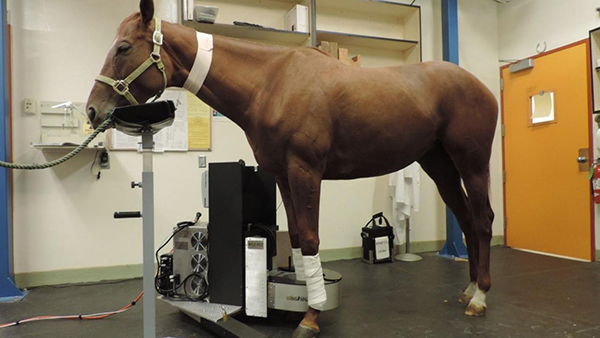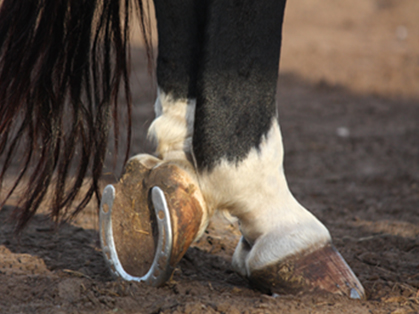Latex Exposure Could be Detrimental to Horse Health
December 26, 2019 Comments Off on Latex Exposure Could be Detrimental to Horse Health
Horses primarily come into contact with natural rubber latex on artificial riding surfaces, like arenas and racetracks. Urbanized environments, which also have higher levels of breathable latex from car tires, have been identified as a risk factor in sEA, as well.
Continue reading …Cross Training For Competitive Equines?
December 23, 2019 Comments Off on Cross Training For Competitive Equines?
“Whether it be a football player studying ballet or a dressage horse learning to work cows – cross-training is a central pillar to athletic success and longevity.” – Dr. Brianne Henderson BVMS MRCVS, Ferguson Equine Veterinary Services & Toronto Equine Hospital
Continue reading …President Trump Signs First Federal Anti-Cruelty Statute Into Law
December 20, 2019 Comments Off on President Trump Signs First Federal Anti-Cruelty Statute Into Law
“We have a responsibility to honor the dignity of God’s creation,” said President Donald J. Trump. “With today’s act, we take the critical step toward being more responsible and humane stewards of our planet and all who we want to cherish and take care of, and all of those who live on it.”
Continue reading …FDA Approves New Drug For Control of Pyrexia, “Fever,” in Horses
December 20, 2019 Comments Off on FDA Approves New Drug For Control of Pyrexia, “Fever,” in Horses
Pyrexia, or fever, is associated with a number of underlying diseases and can result in significant negative outcomes, including dehydration, laminitis, muscle wasting, weight loss, and in some cases death. Among performance horses, fever can also lead to loss of training and competition days. There are more than eight million horses in the United States, and over one million are seen by a veterinarian for fever annually.
Continue reading …Horse Survives Aggressive Bacterial Infection to Return to Show Pen
December 19, 2019 Comments Off on Horse Survives Aggressive Bacterial Infection to Return to Show Pen
“As more time passed, with no response to the antibiotics, Royal’s survival rate was diminishing,” Ammeson said. “How long can a horse live on three legs before he founders, or his body gives out?”
Continue reading …From Corporate Desk Job to Equine Massage
December 18, 2019 Comments Off on From Corporate Desk Job to Equine Massage
It was not always this way for Marguerite as her initial career started out as an administrative/executive assistant for a pharmaceutical company. She was drawn to horses as a child and rode whenever she could. As a teen, the opportunity for exposure to the racing industry presented itself when her family purchased a cottage in Kincardine, which backed onto the local fairgrounds where Standardbreds trained.
Continue reading …How Safe is Your Horse Trailer, Really?
December 16, 2019 Comments Off on How Safe is Your Horse Trailer, Really?
Have you ever just backed up to your horse trailer, attached it to your truck, loaded your horses and drove on down the road without another thought? Well, I hate to admit it, but I have.
Continue reading …First Standing Equine PET Scanner Now Ready For Clinical Use
December 16, 2019 Comments Off on First Standing Equine PET Scanner Now Ready For Clinical Use
The UC Davis School of Veterinary Medicine, in collaboration with LONGMILE Veterinary Imaging, has completed the first phase of the validation of the MILE-PET, the first positron emission tomography (PET) scanner specifically designed to image the limbs of standing horses, using light sedation, eliminating the need for anesthesia.
Continue reading …New Genetics Research Could Lead to Test For EMS
December 15, 2019 Comments Off on New Genetics Research Could Lead to Test For EMS
Equine metabolic syndrome (EMS) is linked to obesity, insulin resistance, and laminitis—a painful and debilitating inflammation of tissue in a horse’s hooves, which can necessitate euthanasia in severe cases. This study aimed to equip horse owners and veterinarians with a potential path toward getting ahead of this debilitating disease through genetic screening.
Continue reading …Equine Therapy Successfully Included in Veteran Suicide Prevention Bill
December 12, 2019 Comments Off on Equine Therapy Successfully Included in Veteran Suicide Prevention Bill
“In a time when so many veterans are so hesitant to take another prescription or fear getting addicted to opioids, equine assisted therapy gets veterans outside and allows them the amazing opportunity to work with horses to process their experiences,” said Congressman Barr. “As the Chairman of the Congressional Horse Caucus and someone who cares very deeply for our veterans, I believe increasing grant funding opportunities for evidence-based equine-assisted therapy and innovative therapies will greatly diversify the treatment options available to our veterans.”
Continue reading …







